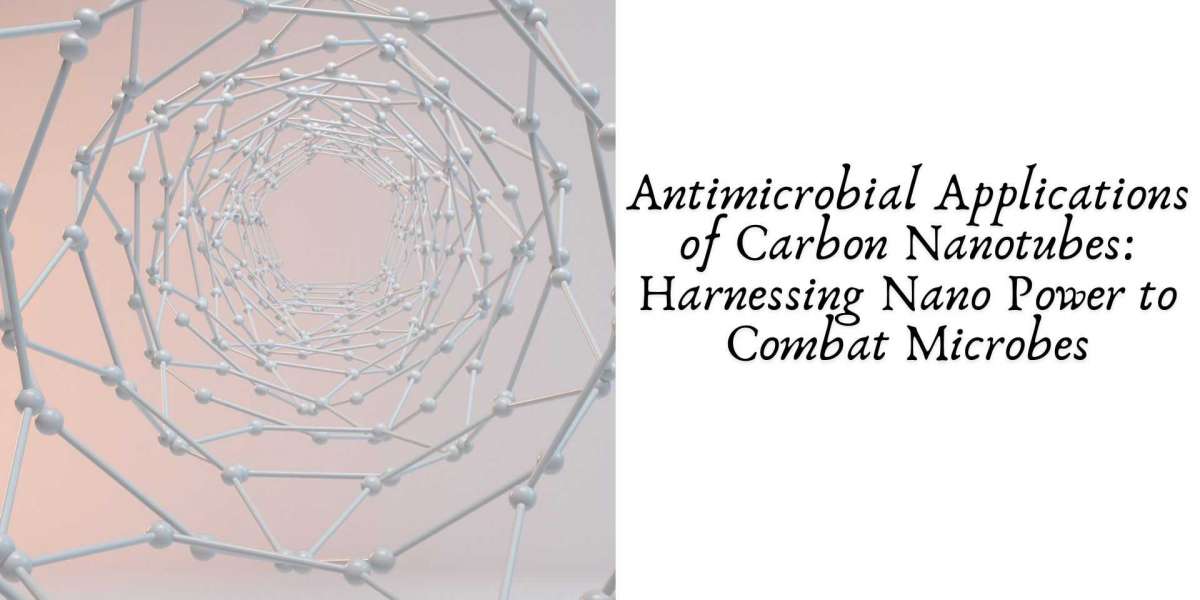In the age of increasing antibiotic resistance and persistent microbial contamination, scientists and engineers are seeking advanced materials that can offer new solutions. Carbon nanotubes (CNTs), with their unique structural and chemical properties, have emerged as powerful tools in antimicrobial applications. These nanostructures, formed from rolled sheets of graphene, exhibit exceptional mechanical strength, thermal conductivity, and chemical versatility. Most notably, their ability to interact with and disrupt microbial membranes has positioned CNTs at the forefront of antimicrobial research.
This article explores the mechanisms by which carbon nanotubes exert antimicrobial effects, their applications across various industries, and the challenges and opportunities they present for future development.
Understanding Carbon Nanotubes (CNTs)
Carbon nanotubes are cylindrical nanostructures composed of carbon atoms arranged in a hexagonal lattice. They are categorized into two main types:
- Single-walled carbon nanotubes (SWCNTs): Composed of a single layer of graphene rolled into a cylinder.
- Multi-walled carbon nanotubes (MWCNTs): Consist of multiple layers of graphene cylinders nested within each other.
Both types offer high surface area, tunable surface chemistry, and strong interaction capabilities, which are essential for biomedical and antimicrobial applications.
Mechanisms of Antimicrobial Action
CNTs exhibit antimicrobial activity through several interconnected mechanisms:
Physical Disruption of Microbial Membranes
CNTs can pierce or wrap around bacterial cell membranes, causing physical damage and leakage of intracellular contents. This "nano-needle" effect is particularly effective against gram-negative bacteria due to their thinner cell walls.
Generation of Reactive Oxygen Species (ROS)
Some functionalized CNTs induce oxidative stress in microbial cells by generating ROS. These molecules damage cellular proteins, DNA, and lipids, leading to cell death.
Cellular Envelopment and Isolation
CNTs can envelop microbial cells, effectively isolating them from nutrients and preventing proliferation.
Interaction with Genetic Material
CNTs may penetrate into cells and interfere with DNA replication or protein synthesis, further inhibiting microbial growth.
These multifaceted mechanisms reduce the risk of microbes developing resistance, a major advantage over traditional antibiotics.
Functionalization for Enhanced Activity
Pristine CNTs may have limited antimicrobial efficacy due to poor dispersion in aqueous environments and potential cytotoxicity. To overcome these limitations, researchers modify CNT surfaces through:
- Covalent functionalization: Attaching antimicrobial agents (e.g., silver nanoparticles, antibiotics) directly to CNTs to create synergistic effects.
- Non-covalent functionalization: Using surfactants or polymers to improve solubility and biocompatibility.
- Surface oxidation: Introducing oxygen-containing groups (e.g., hydroxyl, carboxyl) to increase hydrophilicity and facilitate cellular interactions.
Functionalization tailors CNT properties for specific applications, enhancing antimicrobial action while minimizing side effects.
Applications Across Sectors
Medical and Healthcare Sector
Wound Dressings and Bandages
CNTs are incorporated into nanocomposite dressings to prevent infection and promote healing. Their ability to kill bacteria without harming human cells makes them ideal for chronic wounds.
Medical Device Coatings
Catheters, implants, and surgical instruments coated with CNTs exhibit reduced biofilm formation and bacterial colonization.
Drug Delivery Systems
Functionalized CNTs deliver antimicrobial agents directly to infection sites, improving drug efficacy and reducing systemic side effects.
Water Treatment and Filtration
CNT-embedded membranes remove microbial contaminants from water through both filtration and antimicrobial action. This dual capability makes CNTs promising for portable water purification systems and municipal treatment facilities.
Food Packaging
CNT-infused polymers are used in active packaging to inhibit microbial growth on food surfaces. This extends shelf life and reduces foodborne illnesses.
Textile Industry
Antibacterial fabrics containing CNTs are being developed for use in medical uniforms, sportswear, and military clothing. These textiles prevent odor and reduce infection risks.
Air Filtration and HVAC Systems
Air filters embedded with CNTs trap and deactivate airborne pathogens, offering enhanced protection in hospitals, airplanes, and public spaces.
Safety and Toxicity Concerns
Despite their promise, the use of CNTs in antimicrobial applications raises important safety considerations:
- Cytotoxicity: Some studies have shown that CNTs can be toxic to human cells, especially in high concentrations or unmodified forms.
- Environmental Impact: The long-term effects of CNTs on ecosystems are not fully understood. Their persistence and potential accumulation in organisms require further study.
- Regulatory Challenges: The lack of standardized testing protocols and regulatory frameworks hinders widespread commercialization.
Researchers are actively working to improve CNT safety profiles through biocompatible coatings, biodegradable composites, and controlled-release systems.
Future Prospects and Innovations
The future of CNT-based antimicrobials is bright, with emerging trends focusing on:
- Hybrid Nanomaterials: Combining CNTs with metals like silver, copper, or zinc to boost antimicrobial activity.
- Smart Materials: Developing stimuli-responsive CNT systems that release antimicrobial agents only in the presence of pathogens.
- Personalized Medicine: Designing CNT-based therapies tailored to individual microbial profiles and patient conditions.
- Green Synthesis: Advancing eco-friendly and scalable methods for CNT production to minimize environmental and health risks.
As research progresses, CNTs are likely to play a critical role in next-generation antimicrobial technologies, particularly in the face of rising antibiotic resistance.
Conclusion
Carbon nanotubes have emerged as a powerful tool in the fight against microbial infections. Their ability to physically disrupt cells, generate oxidative stress, and serve as delivery vehicles for antimicrobial agents makes them highly effective across a wide range of applications. While challenges related to toxicity and regulation remain, ongoing innovation in functionalization and composite materials promises safer, more effective CNT-based antimicrobial solutions.








